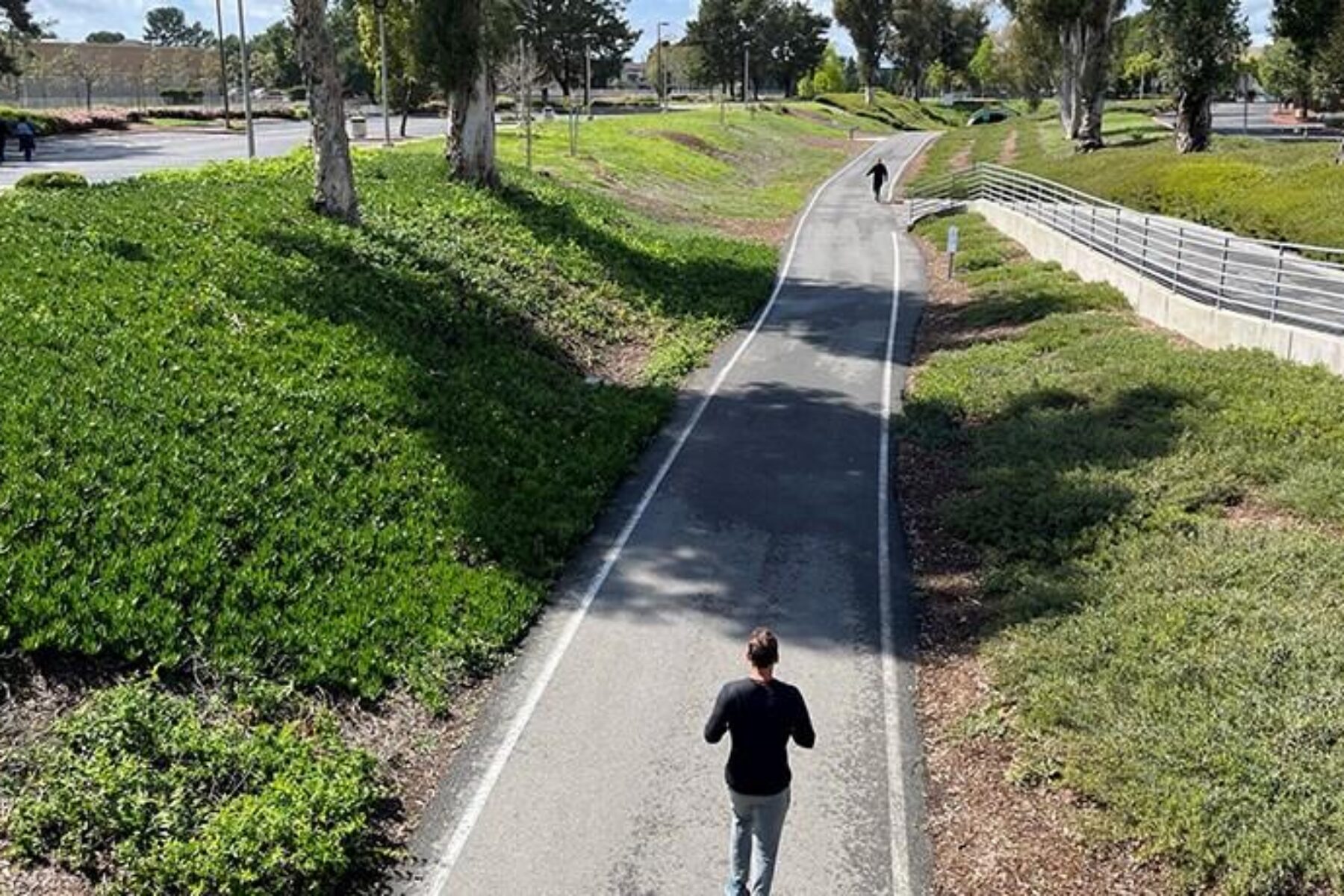First Transportation Alternatives Funding Cycle Since BIL Shows Room for Improvement

The nation’s largest source of dedicated funding for trails, walking and biking, the Transportation Alternatives Set-Aside (TASA), got a major boost when the Bipartisan Infrastructure Law (BIL) was passed in 2021. Rails-to-Trails Conservancy (RTC) celebrated a 70% increase in funding for the program alongside policy changes that support equity, connectivity and maintenance priorities. BIL also established requirements that make it more difficult to transfer funding away from trails, walking and biking, and other Transportation Alternatives (TA) eligibilities.
Now that the first full TASA funding cycle under BIL has passed, RTC is examining how state departments of transportation (DOT) and metropolitan planning organizations (MPO) are responding to the recent policy changes to understand their short- and longer-term implications. Through the Transportation Alternatives Data Exchange (TrADE), RTC monitors how TA funding is implemented by states and examines and outlines trends via our annual Transportation Alternatives Spending Report.
This year’s report—released this week and covering fiscal years (FYs) 1992–2022—looks more closely at states that can serve as role models for TA implementation nationwide. The report also looks at areas where there is more work to do to realize the potential of the TA program and address the tens of billions of dollars in unmet demand for connected active-transportation infrastructure across the country.
Below are some of the findings.
Mixed Outcomes for Transportation Alternatives’ First Year Under BIL
FY 2022 was the first year that states saw the increases in funding and programmatic changes that BIL made possible. A total of $1.38 billion in TA funding was apportioned to states compared with $850 million in FY 2021. Under BIL, the total apportionment will increase each year—reaching $1.49 billion by FY 2026. In this first cycle, we’ve seen some states take actions that strengthen the local application of the program, demonstrate readiness to fund more and larger grant projects, and take advantage of other changes in BIL to deliver more equitable and impactful projects. However, these states are in the minority.
Obligation rates (where the Federal Highway Administration, or FHWA, commits to reimburse states for the federal share of the project cost—typically up to 80%) are a key performance measure for program implementation.
In this round, more money was directed to eligible projects because the total funding available to obligate was higher in FY 2022, but obligation rates were status quo—consistent with FY 2021—at 60%. While this rate is disappointing, history shows that it is not unusual for the national average to be lower in the first year after significant policy changes, as some states take longer to respond to new rules and program requirements. We had hoped to see higher obligation rates, but many states focused on spending down older unobligated balances and did not feel urgency to put their most recent allocations to work building infrastructure.
Looking ahead, we are focused on increasing TA obligation rates, as we know that the project pipeline nationally far outpaces the available funds, and limits on transfers and other changes to the program should put more pressure on states to prioritize these investments.
Restricting Transfers Has the Potential to Be Game-Changing
For the past decade, TA funding was transferred out of the program for other uses far too frequently—a loophole that the FHWA closed entirely for the first year of program implementation under BIL. There was a moratorium on transfers in FY 2022, which set a clear expectation that TA funds should be used for TA eligibilities—but future years of the program will restrict transfers only to situations in which insufficient demand is demonstrated through a competitive grant process. Without a moratorium, advocates and local leaders will need to build a pipeline of projects and work with their DOTs and MPOs to enhance the structure of programs to unlock funding.
This past year proved that restricting transfers has the potential to be game-changing—encouraging some states to restructure their programs to more effectively invest funds. For example, the moratorium on transfers was a factor in motivating the Texas DOT (TxDOT) to make significant, enduring changes to the state’s TA program. TxDOT created a large-grant category that had more than double the amount of funds requested than the next-highest category of community-based grants, clearly illustrating the scale of demand for significant investment.
Going forward, Congress requires states to conduct a competitive process and find a dearth of demand before transferring funds out to other programs. This past fiscal year was illustrative of what the impact could be, but we’ll need to be vigilant as the rules loosen.
Related: New Guidance for Transportation Alternatives: Transformative Funding for Trails, Walking and Biking
States Have Potential to Leverage Funding for Significant Impact and Connectivity
With increased funding comes an opportunity for states to leverage more resources to invest in projects that support connectivity of trails and active transportation infrastructure. These projects deliver significant return on investment but tend to be more complex than other traditional trail, walking and biking projects, and require larger investments to make real progress. To realize this potential, TA funding now creates an opportunity to support efforts by states to fill critical gaps that accelerate the development of active transportation networks in a reasonable time frame.
In FY 2022, we saw some states, like Texas and Montana, recognize this opportunity and redesign their programs to make this easier by creating large-grant funding categories. Montana went a step further by providing more grants with a focus on connectivity—prioritizing the completion of active transportation networks.
It is important to note that TA and TASA funds are suballocated to different areas within a state based on population. BIL increased the suballocation to large, urbanized areas (population greater than 200,000) from 50% to 59%. In these areas, MPOs are required to administer a competitive process to select projects for TASA funds in the region. For FY 2022, the national obligation rate for MPOs was lower than for state agencies, at 54% and 67% respectively. There could be different reasons for this discrepancy; a better understanding of how to support MPOs to improve program implementation could have a significant impact on the use of this funding to accelerate trail and active-transportation network development.
Program Changes Around Match, Maintenance and Technical Assistance Can Deliver Outsized Benefits for Underserved Communities

Other noteworthy changes to the TA program include match flexibility, eligibility of maintenance projects and the use of up to 5% of annual TA allocations to deliver technical assistance—all changes that can deliver significant benefits for underserved communities.
For example, a change to the match requirement could provide relief for low-income communities struggling to meet the matching dollars to unlock TA. Previously, states were required to meet a 20% match for all projects. BIL now allows states to average a 20% match across their full portfolio of TA projects. States have the opportunity to assess equity needs and use this flexibility to adjust match rates based upon community needs and access to capital.
Combined with new or increased technical assistance programs, communities that may have previously struggled to meet the TA match requirement may become more able to access funds to improve the safety and quality of life of their residents. Examples of ways states are meeting this opportunity include toll credits, in-kind matching and partnering with other programs to meet the match requirement, eliminating the match as a barrier for project sponsors. Louisiana worked with the FHWA to pilot a smaller local-share requirement for rural communities to encourage participation in the TA program.
Another key change in BIL allows states to use TA funding for trail maintenance. This is an opportunity that some states are taking advantage of, but it appears that many states either are not aware of this change or are choosing not to use these funds for maintenance. This is a golden opportunity to ensure accessibility for all and to develop a maintenance plan for trails.
What to Expect Next
Approximately $540 million of TASA funds were reimbursed in FY 2022, marking the completion of projects and the return of up-front funds to local communities. Communities of all sizes and across diverse geographies are using the transformative power of these investments now more than ever; however, states must actively obligate funds at a higher rate to spend down the high available balances and meet the growing demand for safe places to walk and bike.
To face the challenges ahead, states are more likely to benefit from this increased funding when they have a pipeline of projects that are ready to receive funding for critical steps—from planning to construction. Ensuring project readiness is key to demonstrating the need and putting funding to work. States and regions should include trail and active transportation networks in their transportation plans and establish priorities to sequence and complete critical connections. A comprehensive approach to connectivity can multiply the benefits and increase the speed at which states and regions can obligate funds.
Program reforms under BIL mark a significant shift in funding for trails, walking and biking that have the potential to increase access to safe and convenient walking and biking facilities across the United States. It’s important that we look at successes and lessons learned in the first year to strengthen the capacity of states and regions to take advantage of federal funding and deliver these critical assets to communities.
About TrADE
Since 1992, RTC has monitored how federal Transportation Enhancements and TA funds have been invested and the projects that this program has built. This annual “Transportation Alternatives Spending Report” is an important tool for states, regions and active transportation professionals to understand and strengthen the program, leveraging the data to improve the efficiency and impact of the investments made.
Each fiscal year, RTC collects and analyzes TA program data from the FHWA’s Financial Management Information System (FMIS) and directly from state DOTs. The voluntary participation of DOT staff has been essential to the success of the data exchange in creating openness and transparency, promoting best practices, and providing citizens, professionals and policymakers with a long history of funding data.
Access the FY 2022 TrADE report, project lists and spending profiles for each state at railstotrails.org/trade.

Donate
Everyone deserves access to safe ways to walk, bike, and be active outdoors.
